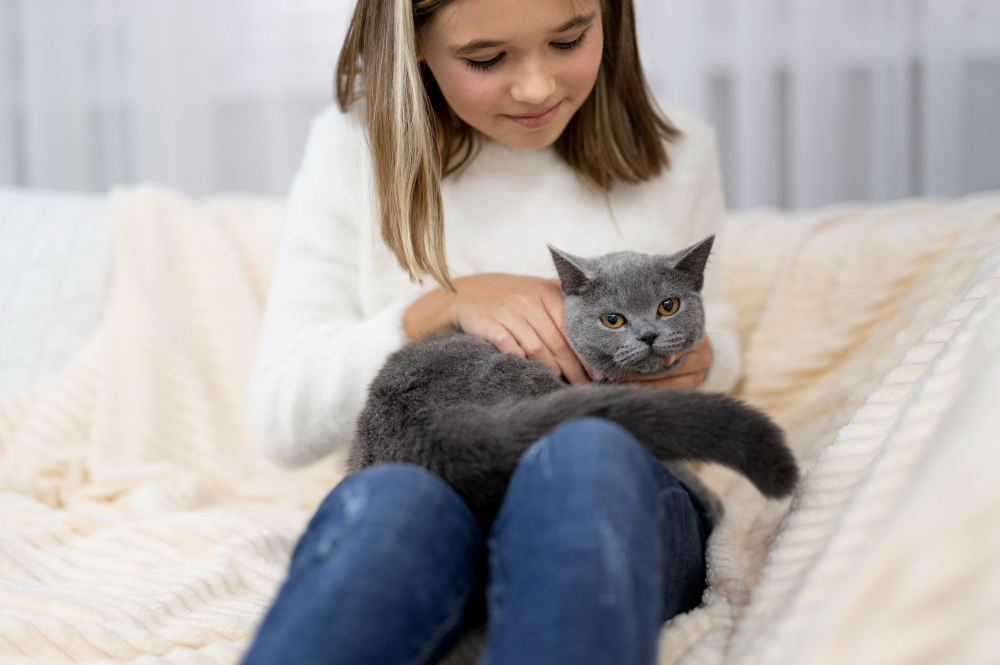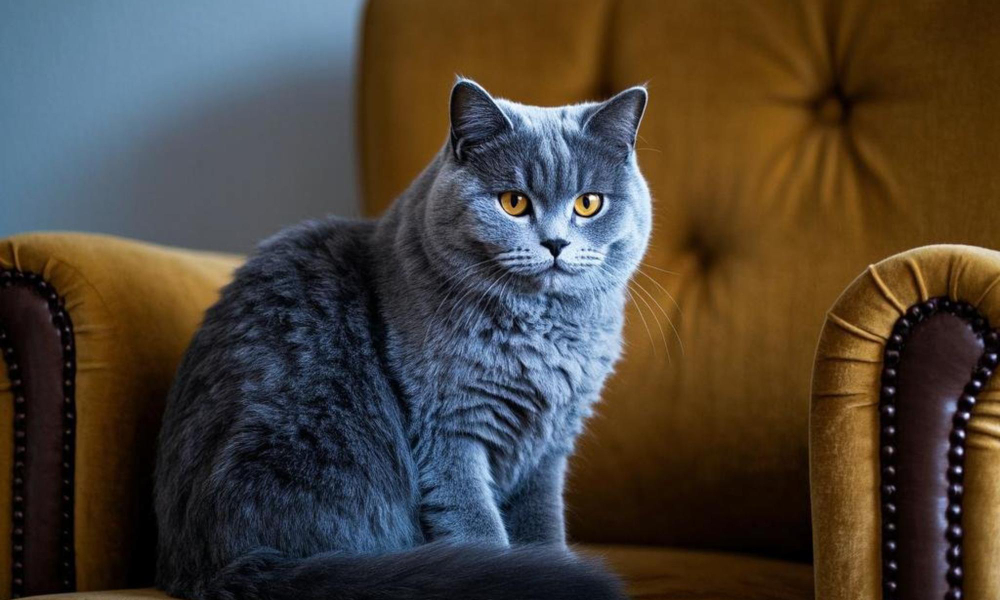Why Feline Observation Matters
When your Blue British Shorthair fixes her gaze on the family dog, she’s not scheming trouble she’s doing her homework. Cats naturally observe before they act, using these quiet moments to size up the dog’s energy, temperament, and whether play feels safe. This watchful curiosity is how your cat builds trust and confidence. By respecting this instinct and giving her time to study, you create the foundation for a calm, positive introduction between cat and dog.
Understanding Blue British Shorthair Traits
Blue British Shorthairs sport plush, steel-gray coats and round, copper eyes that seem to glow with curiosity. They grow into their personalities slowly, blending playful bursts with long stretches of serene companionship. These cats purr softly when content and prefer gentle affection over constant lap time. Their balanced temperament makes them ideal candidates for multi-pet homes.
Decoding Feline Body Language
- Ears tilted forward signal interest.
- Whiskers pointing toward a dog show focus.
- Narrowed pupils sharpen a cat’s vision.
- Slow tail-tip swishes indicate cautious curiosity.
By learning these feline body language cues, you know when your cat feels safe enough to approach and when she prefers to observe from her high perch.
Step-by-Step Cat-Dog Introduction
- Swap Scents First
- Exchange blankets or toys for 3–5 days so each pet learns the other’s smell.
- Offer Visual Contact
- Use a baby gate or cracked door to let them see and sniff without full access.
- Supervise Short Meetings
- Keep both on leashes or behind a gate in a neutral room.
- Reward calm curiosity in each with treats.
- Extend Interaction Time
- Gradually lengthen meetings as both pets show relaxed body language.
- Celebrate Successful Sessions
- Praise and play together with a wand toy or puzzle feeder to reinforce positive associations.
Luna and Max’s First Meeting
Luna, a three-year-old Blue British Shorthair, perches on her cat tree, tail curled neatly around her paws. Below, Max the Labrador sniffs at a toy. You’ve already swapped their bedding for days. Today, you place each on a leash in the living room, about five feet apart.
Max wags his tail gently. Luna’s ears tip forward and her whiskers twitch as she tracks his every sniff. When Max sits calmly, you drop her treat at Luna’s paws and praise Max with a “Good boy!” After three minutes, Luna inches down for a polite sniff, then hops back up. That first greeting cements their mutual respect and paves the way for future play sessions.

Essential Pet Bonding Tips
- Provide Vertical Escape Routes
Install cat trees or shelves so your cat can observe from above at any time.
- Separate Resources
Keep food and water stations in different rooms to avoid crowding.
- Enrich Their Environment
Offer interactive puzzle feeders and hiding tunnels so both pets stay mentally engaged.
- Use Synchronized Play
Wave a wand or toss a ball at the same time to create shared positive experiences.
- Respect Retreat Signals
If your cat darts away or your dog turns his head, give them space before trying again.
For more on setting up a cat-friendly space, check our Cat Training Guide. For dog behavior advice, see our Dog Behavior Tips.
FAQ
Q: How long does it take for a cat and dog to become friends?
A: Every pair moves at its own pace. Some bond in days, others take weeks of gentle introduction and positive reinforcement.
Q: Can an adult cat learn to live with a playful puppy?
A: Yes. Using scent swapping, controlled meetings, and clear boundaries helps mature cats adapt to puppy energy.
Q: What if my cat hisses or swats?
A: Hissing signals stress. Back off and give your cat more time to observe safely. Repeat short, positive sessions until she relaxes.







